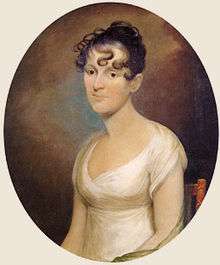Cephas Thompson


Cephas Thompson (July 1, 1775 – November 6, 1856) was a successful, self-taught, early nineteenth-century portrait painter in the United States, who was born, died, and lived most of his life in Middleborough, Massachusetts.
Thompson married Olive Leonard on March 18, 1802. Their son, Cephas Giovanni Thompson, became a painter of portraits and landscape in his own right, and a friend of the author Nathaniel Hawthorne. Their daughter Florantha married missionary Granville Sproat and, after spending time teaching at La Pointe, Wisconsin, moved to California during the gold rush. Florantha and Granville's daughter Elvira (Cephas Thompson's granddaughter) married James Hutchings, the early promoter of Yosemite.[1]
Although Thompson lived most of his life in Middleborough, he produced portraits throughout New England and from 1800-25 also made annual trips to the south during the winter months to paint in Alexandria, Baltimore, New Orleans, Norfolk, Philadelphia, and the Carolinas and Georgia. When about fifty years of age, he settled permanently in his home in Middleborough.
Among his portraits were those of John Marshall, Stephen Decatur, David Ramsay of South Carolina, John Howard Payne, Elizabeth Wirt, and George Washington Parke Custis, who was his pupil. The largest collection of his work is in the Boston Athenæum.
References
- ↑ Huntley, Jen A. (2011). The Making of Yosemite: James Mason Hutchings and the Origin of America's Most Popular National Park. Lawrence: University of Kansas Press. ISBN 978-0-7006-1805-7.
External links
- Works by or about Cephas Thompson in libraries (WorldCat catalog)